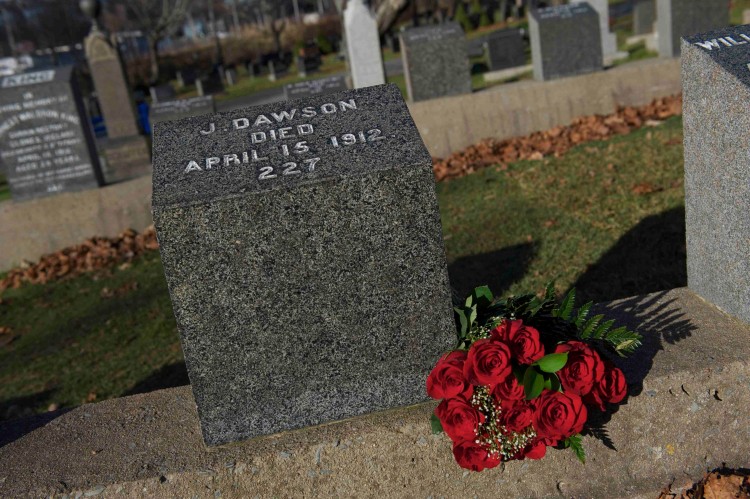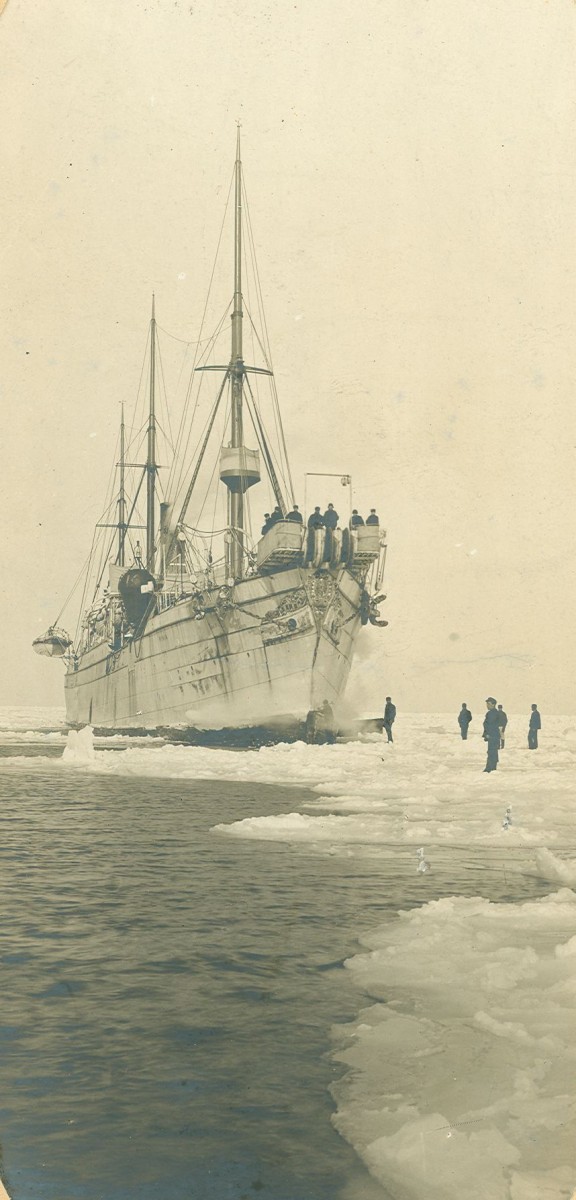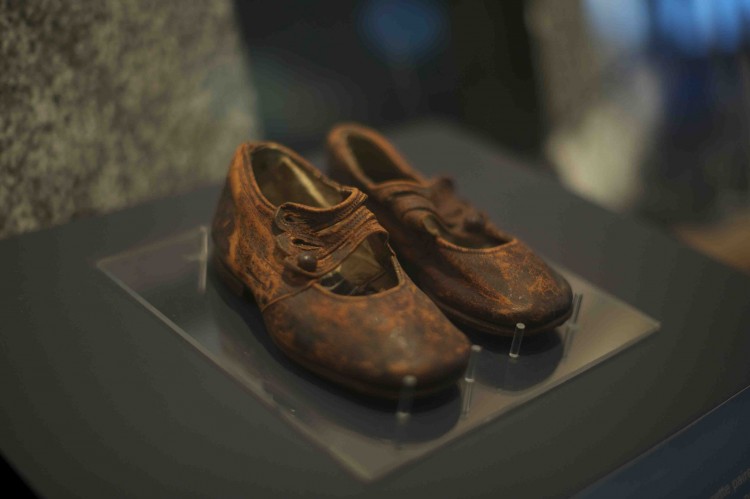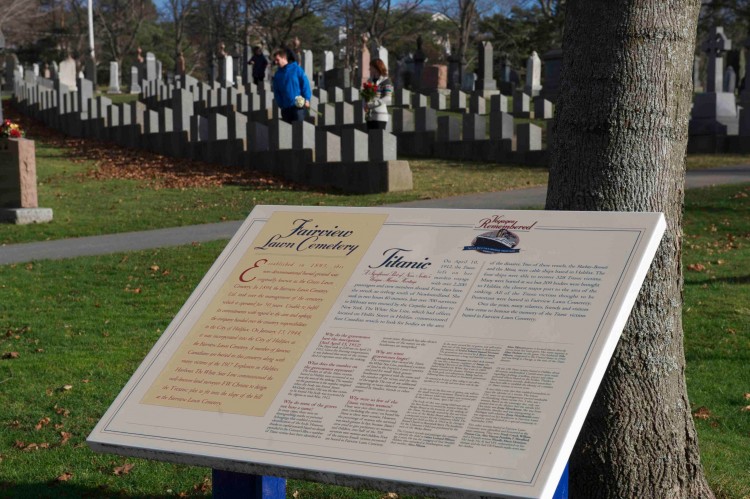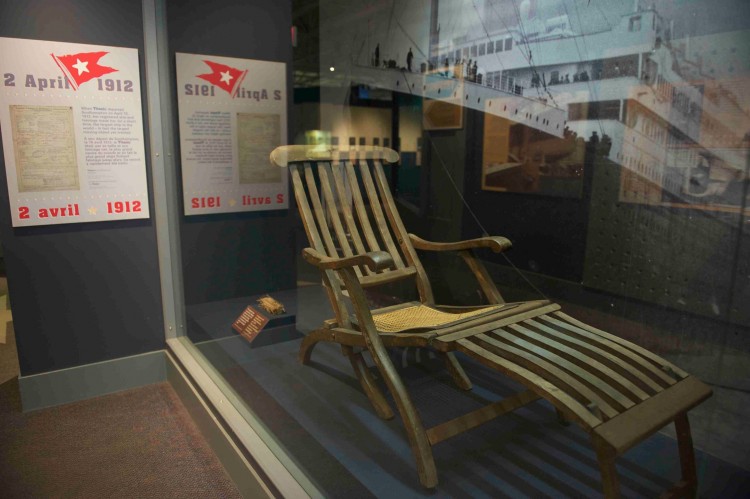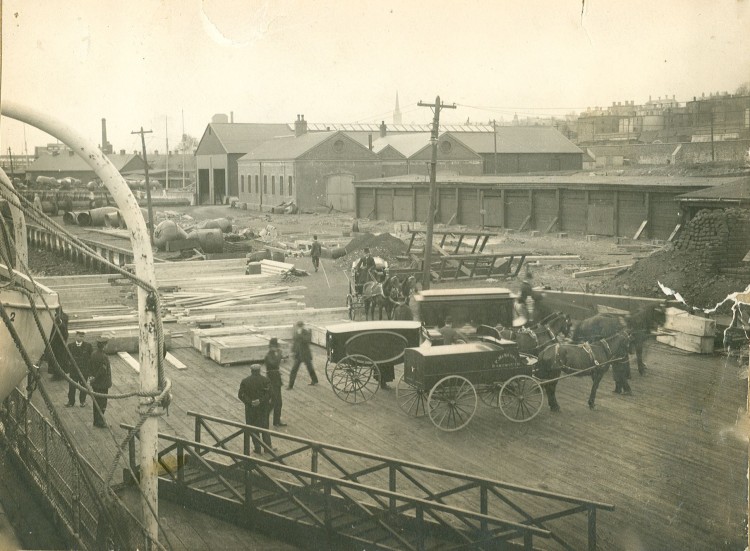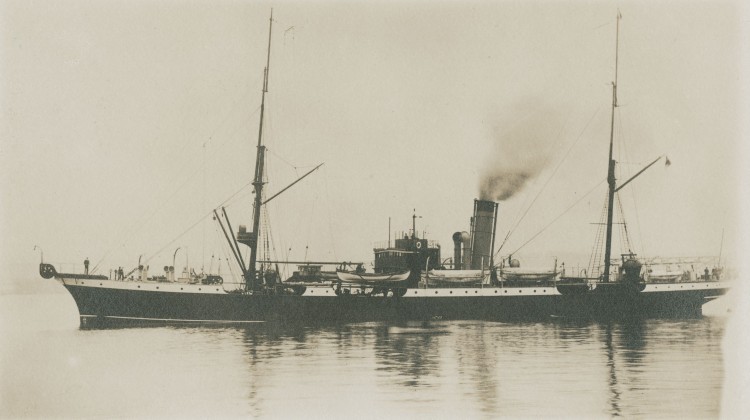The buzz is building in Halifax in the lead-up to the 100th anniversary of the sinking of the Titanic, one of the world’s greatest marine disasters that has indelible links to the city.
It was just before midnight on April 14, 1912, that the so-called unsinkable technological marvel of the Edwardian age struck a giant iceberg about 650 kilometres southeast of Newfoundland.
About two hours later the RMS Titanic sank to its watery grave in the Atlantic, taking more than 1,500 souls with it.
Being the nearest major port, Halifax played a key role in the tragedy’s aftermath and the city became the focal point of the world’s grief.
The rescue and recovery mission was organized from Halifax, and the city has several sites connected to the Titanic, the most poignant being the graves of victims that were recovered by Halifax-based ships.
Of the 209 bodies that were brought to Halifax, 59 were shipped elsewhere by train to their families while 150 were laid to rest in three local cemeteries.
With 121 graves, Fairview Lawn Cemetery has more Titanic victims interred than any other cemetery in the world. The graves are laid out in a curved shape, suggesting the outline of the bow of a ship.
“That’s the big connection, because it’s the most visible reminder of the Titanic,” says John Boileau, author of “Halifax and Titanic.”
“It’s quite a moving sight because of the way the graves are laid out and the stories connected with them.”
Some of those stories are by now legendary. William Denton Cox, a steward who died while escorting third class women and children to lifeboats, is buried at Fairview, also home to the grave of the famous “unknown child,” finally positively identified in 2007 as 19-month-old English boy Sidney Goodwin.
“So now it’s known,” says Boileau. “But there are no plans to change the headstone to put his name on it, and to this day the headstone is deemed by many, many people to represent all the [approximately 53] children who went down with Titanic.”
Fairview also has a grave marked J. Dawson which gained brief fame after the release of the 1997 movie “Titanic,” since the name of Leonardo DiCaprio’s character in the film was Jack Dawson.
But the grave is actually that of Joseph Dawson, an Irishman who worked in the Titanic’s boiler room as a coal trimmer. Although director James Cameron had said the character’s name was not inspired by the grave, many fans of the movie left flowers, love letters, and ticket stubs by Dawson’s headstone.
Inscriptions
Many of the graves have small granite headstones with just the name and date of death, paid for by Titanic owner White Star Lines. However, some families or friends paid for larger markers with more inscriptions. Boileau says the headstone for the unknown child was paid for by the crew of the Mackay-Bennett, which recovered the body.
“All kinds of people volunteered to pay for a separate headstone for the unknown child, but the crew of the Mackay-Bennett had the honour of doing that, and they also carried the casket to the grave,” he says.
The occupants of a third of the graves, however, have never been identified.
Boileau says there was a lot of criticism at the time that the crew didn’t do enough to save the passengers and that too many crew members survived and didn’t go down with the ship.
This is why the family of a coal trimmer from Southampton buried at Fairview by the name of Everett Edward Elliott paid for a special inscription on his headstone that reads: “Each man stood at his post while all the weaker ones went by, and showed once more to all the world how Englishmen should die.”
Continued on the next page: Commemorative events ...
“His family simply wanted people to know that he wasn’t a coward, that he was heroic, and he stayed at his post and went down with the ship doing his duty,” says Boileau.
“It is quite moving. I actually choke up every time I go the cemetery and read it.”
Of the approximately 130 Canadians aboard the Titanic, two came from Halifax: well-known socialite Helen Slater, who survived, and philanthropist millionaire George Wright, who perished.
Although about 700 survivors had been rescued by the RMS Carpathia, Boileau says some—largely very wealthy—families of the victims who wanted the bodies of their loved ones recovered put pressure on White Star Lines to mount a recovery operation out of Halifax.
Commemorative Events
Like other cities with strong Titanic connections—Belfast, where the ship was built and Southampton, from where it set sail—Halifax has several events planned around the centennial of the sinking.
One of the highlights will be a visit by the MS Balmoral, which on its Titanic Memorial Cruise is scheduled to leave Southampton full of passengers on April 8 and follow the Titanic’s original itinerary, passing by Cherbourg on the French coast and making a stop at the Irish port of Cobh.
After arriving at the site where the Titanic sank on that fateful night, a memorial service and wreath-laying ceremony will be held at the exact time the liner went under—2:20 a.m. on April 15. After that it will continue on to Halifax, and then New York.
Another ship, the Azamara Journey, will depart from New York on April 10, 100 years to the day that the Titanic set sail from Southampton. After a stop at Halifax, it will sail to the site for the memorial service commemorating the 100th anniversary.
Between March and July in Halifax, there will be concerts and conferences; Titanic dinner theatre; tours to Titanic-related sites; special exhibits; a 100th anniversary Heritage Dinner; and at the Bedford Institute for Oceanography, people will be able view an exhibit of what the Titanic looks like today lying on the ocean floor.
The Maritime Museum of the Atlantic is home to a permanent display of the largest collection of wooden Titanic artifacts in the world, including a well-preserved deck chair. From April 12 to Oct. 31, there will be a cable ship exhibit at the Museum through which visitors can learn about the role the ships and their crews played in the Titanic recovery effort.
This year also marks the 225th birthday of Samuel Cunard, whose world-renowned Cunard shipping line competed against and later merged with Titanic’s White Star line in the 1930’s. Cunard was born in Halifax in 1787.
In nearby Yarmouth lies the wreck of the Samson, which some believe to be the mystery ship that was seen near the Titanic before she sank, but for some reason failed to come to the rescue. Another theory holds that the Californian, a British steamship, was the mystery ship.
Boileau feels that of all the cities with Titanic connections, Halifax has the most moving and vivid reminders of the tragedy. He adds however that the city’s role in the recovery operation is not widely known.
“Halifax is so central to the story, and this isn’t covered in a lot of books about the Titanic, because many books about the Titanic end with the sinking and the rescue operation—the 700 plus people who were rescued by Carpathia and taken to New York City. They might mention the American and British inquiries that occurred afterwards, but very few actually talk about the recovery operation that was mounted out of Halifax.”



